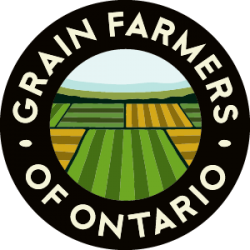Breeding Eastern Canadian winter wheat for resistance to biotic and tolerance to abiotic stresses
Principal Investigator: Ljiljana Tamburic-Ilincic
Research Institution: University of Guelph
Timeline: April 2013 – March 2018
Objectives:
- Development of winter wheat germplasm with increased resistance to Fusarium head blight (FHB) and other diseases and stress tolerance for Eastern Canada.
- Development of high yielding soft winter wheat varieties with increased resistance to diseases.
- Generating phenotypic data for mapping of FHB resistance genes.
- Mapping QTLs for FHB resistance, FDK level and DON accumulation.
- Investigate role of green leaf duration after heading in breeding winter wheat for high yield.
- Monitoring of Fusarium graminearum populations (15-ADON and 3-ADON chemotypes) across different wheat growing areas in Ontario and investigate their ability to produce mycotoxins.
Impacts:
- Soft red winter wheat germplasm and cultivars were developed with higher yield potential, good quality and increased FHB and leaf disease resistance.
- The most popular cultivars were ‘UGRC Ring’ and ‘Marker’; they are moderately resistant (MR) to FHB and deoxynivalenol (DON) accumulation.
- Developed cultivars provided growers with a higher financial return.
- Industry and consumers benefit from wheat with lower DON levels.
- New QTLs for FHB symptoms, FDK level and DON accumulation were identified.
Scientific Summary:
Increased yield and better quality of winter wheat (Triticum aestivum L.) can be achieved by improved resistance to biotic and abiotic stresses. The decision to plant winter wheat varieties resistant to different stresses is the most effective management option for producers. The most important winter wheat disease in Eastern Canada is FHB. FHB is mainly caused by a fungus Fusarium graminearum (Fg). The main mycotoxin produced by Fg in Canada is deoxynivalenol (DON). DON accumulation in grain is a recognized health risk for both humans and animals and regulated by Health Canada. Current maximum permitted DON level for wheat in Canada is 2 ppm in uncleaned soft wheat and 1 ppm for baby foods. This level is difficult to achieve during severe epidemic years. Ontario wheat producers have identified Fusarium research as their number one wheat disease research priority as the disease is a major barrier to the competitiveness of the Ontario wheat industry. Septoria tritici blotch (STB), caused by Mycospharella graminicola (anamorph Septoria tritici) is one of the most important foliar diseases in wheat in Ontario which significantly reduces grain yield. Combining resistance to multiple diseases in a single cultivar is difficult. This project incorporated resistance to important wheat diseases into winter wheat for Eastern Canada. In addition to resistance to different stresses, agronomic and quality characteristics are incorporated into developed and registered winter wheat.
Results
1. A moderate level of Septoria leaf blotch and powdery mildew was detected across winter wheat breeding lines grown in experimental plots in Ontario in 2017. High levels of stripe rust were recorded in 2016 in Ontario. The level of FHB was high in 2013 and 2015. Disease severities for foliar diseases and FHB varied among genotypes and lines with highest level of resistance were selected.
2. Soft red winter wheat cultivars developed by the program (‘UGRC Ring’, ‘Marker’, ‘OAC Flight’, ‘UGRC GL 96’, ‘UGRC GL 164’ and ‘UGRC C2-5’) have high yield and increased resistance to diseases. The most popular among growers are ‘UGRC Ring’ and ‘Marker’; they have a moderately resistant (MR) level of FHB resistance.
3. Quantitative trait loci (QTL) associated with FHB traits, Septoria leaf complex and plant height were identified in a Maxine/FTHP Redeemer population. FHB resistance QTL were identified on chromosomes 2A, 4A, 6A, 3B, 4B, 2D and 3D, while QTL for Septoria leaf complex were identified on chromosomes 4B and 7A. Plant height QTLs were identified on chromosomes 4A, 6A, 4B and 2D.
4. Green leaf duration (stay-green) was measured using GreenSeeker. The relationship between yield and stay-green, test weight and stripe rust severity were investigated in winter wheat. Significant positive correlation was recorded between yield and averaged stay-green ratings. Significant negative correlation was recorded between yield and stripe rust severity, while significant positive correlation was recorded between yield and test weight.
5. We monitored Fusarium graminearum (Fg) 15-ADON and 3-ADON chemotypes across different wheat growing areas in Ontario and investigated their ability to produce mycotoxins. 15-ADON Fg chemotypes were predominant in Ontario.
Conclusions
Soft red winter wheat cultivars developed by this breeding program (‘UGRC Ring’, ‘Marker’, ‘OAC Flight’, ‘UGRC GL 96’, ‘UGRC GL 164’ and ‘UGRCC2-5’) are marketed in Ontario. They had good winter survival, diseases resistance and agronomic performance across the province compared to other cultivars in Performance Trials, with and without fungicide applications. ‘UGRC Ring’ had the best performance in Ontario and had an excellent performance in Quebec. Plant Breeders Rights were granted for ‘UGRC Ring’.
External Funding Partners:
This research activity was part of the National Wheat Improvement Program Cluster led by the Western Grains Research Foundation (WGRF).
Funding for this project was provided in part by Agriculture and Agri-Food Canada through the Growing Forward 2 (GF2) AgriInnovation Program and in part by Canadian Field Crop Research Alliance (CFCRA) members. Grain Farmers of Ontario is a founding member of the CFCRA.
Project Related Publications:
Tamburic-llincic, L., and Barcelos Rosa, S. 2017. Alleles on two dwarfing loci on 4B and 4D are main drivers of FHB-related traits in the Canadian winter wheat population ‘Vienna’ x ‘25R47’. Plant Breeding. 136(6): 799-808.
Burlakoti, R., Tamburic-Ilincic, L., Limay-Rios, V., and Burlakoti, P. 2017. Comparative population structure and trichothecene mycotoxin profiling of Fusarium graminearum from corn and wheat in Ontario, Central Canada. Plant Pathology. 66: 14–27.
Tamburic-Ilincic, L., Ashley Wragg, L., and Schaafsma, A. 2015. Mycotoxins accumulation and Fusarium graminearum chemotype diversity in winter wheat grown in Southwestern Ontario. Canadian Journal of Plant Science. 95: 931-938.
Tamburic-Ilincic, L. and Smid, A. 2015. Marker, soft red winter wheat. Canadian Journal of Plant Science. 95(5): 1029-1031.
Tamburic-Ilincic. L. and Smid, A. 2015. UGRC Ring, soft red winter wheat. Canadian Journal of Plant Science. 95(5): 1033-1035.

